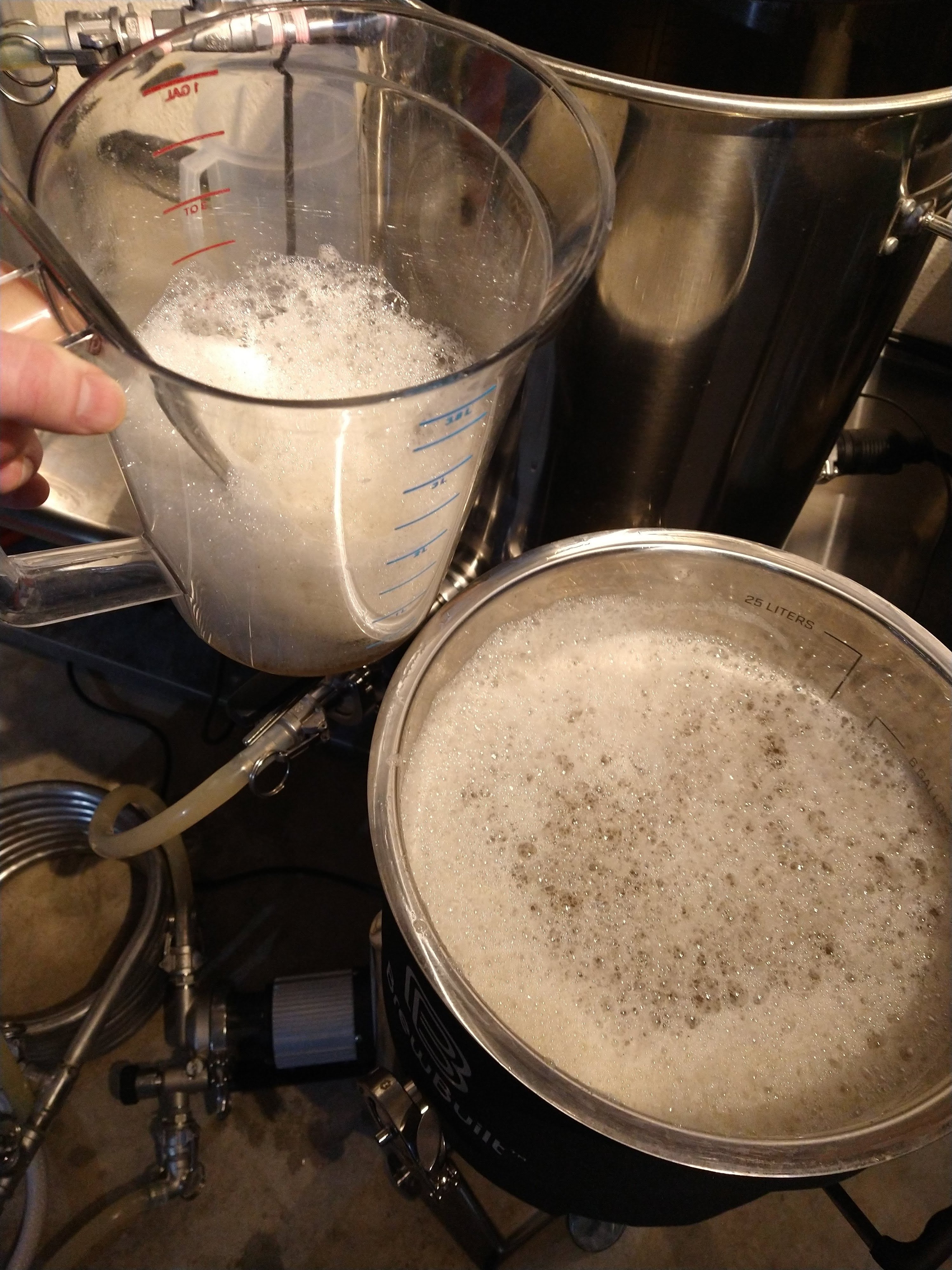I've been reading a bit about LODO processes lately. I already do closed transfers into purged kegs, but I haven't paid any attention to the hot side really. Keeping in mind minimizing oxygen pickup, I changed from using this Brewtech vourlaf attachment during RIMS recirculation to using a Blichmann Autosparge arm on my batch I brewed today. With that, it had the recirc hose laying on top of the mash, with the hose just below the water level. With the Brewtech vourlaf attachment, I would typically fill up the headspace in my mash tun with lots of light, airy foam during recirc. With the Autosparge, I didn't get any of the foam (expected).
Once it was in the boil kettle, the hot break foam that formed right when coming to a boil was a noticeable pure white. I saw @Bassman2003 reference the hot break foam color when he was doing an experiment to compare the effect of process on hot side aeration.

After the boil, and chilling my wort, I was doing my usual process of pumping the wort to my fermentor through my strainer to catch hop debris. And at this point, I got lots of the airy foam I usually see in the mash when I was using the vourlaf attachment.

So I was curious if anyone had a physical explanation behind the coloring of the hot break as an indicator of HSA during mashing? And any thought or experience of the foam that I saw when transferring to the fermentor?
Not really a problem I'm trying to solve here, just trying to understand the observations I've had.
Once it was in the boil kettle, the hot break foam that formed right when coming to a boil was a noticeable pure white. I saw @Bassman2003 reference the hot break foam color when he was doing an experiment to compare the effect of process on hot side aeration.

After the boil, and chilling my wort, I was doing my usual process of pumping the wort to my fermentor through my strainer to catch hop debris. And at this point, I got lots of the airy foam I usually see in the mash when I was using the vourlaf attachment.

So I was curious if anyone had a physical explanation behind the coloring of the hot break as an indicator of HSA during mashing? And any thought or experience of the foam that I saw when transferring to the fermentor?
Not really a problem I'm trying to solve here, just trying to understand the observations I've had.

